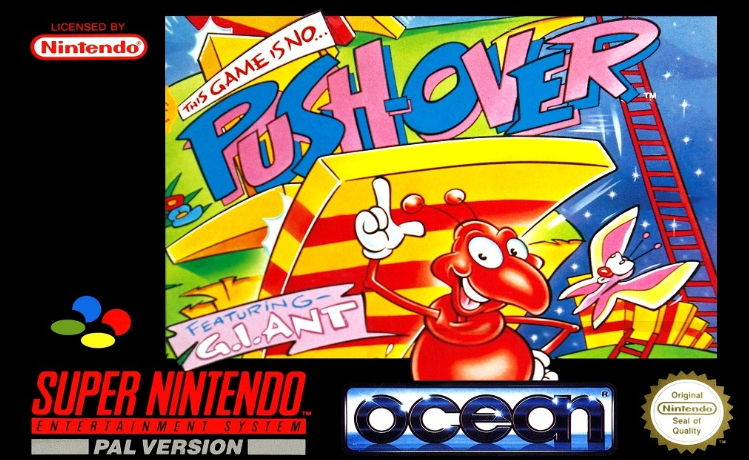
Bringing games from the past can be interesting for one reason or another, but there can also be the least noble purpose of trying to make people suffer as you did, using your articles to get closer to rescued games. ¿Can an ant moving dominoes raise mortal wishes, to kill or die? Can can. Come with me to the world of Pushover, one of the most complex and maddening puzzle games I've ever had in my life.
Created in 1992 by Red Rat Software and released by Ocean for Atari ST, Amiga and PC MS-DOS computers, and also for Super Nintendo as the only console version of the title, it turns out that we have it for sale currently on Steam at DOS version precisely. His so particular and original proposal can work perfectly today in a world where this type of simple, convoluted and special games have much more space than in past decades.

And there is a story, which has to do with the photo above and the one you will see below. You see, that dog is Colin Curly, the mascot of some potato snacks called quavers, which would be something like our fried foods, from the Smiths' British snack Quavers brand. Some feedback was even created at the time with the game, with promotions and cross advertisements. Okay, so it turns out that Colin has dropped nine bags of snacks in an anthill, in the most stupid way possible, and asks a random ant, with a great name G. I. Ant, to do it for them.
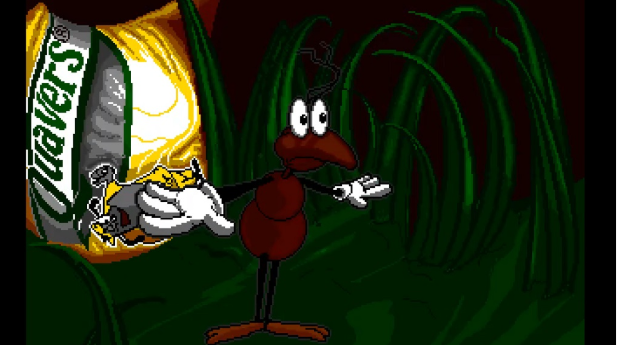
In the version of Super Nintendo it is a certain Captain Rat, a red rodent in military attire, who hires the services of GI Ant to recover the money that has fallen into the anthill, without the intros like the ones you have seen, which are only typical of computers. But it is that to call an anthill what we have to go through seems to me the first mental sprain of the game, and that we have to recover the dough of snacks or money moving dominoes, I will not tell you.
That is Pushover, an ant moving domino pieces so that the exit door opens when they all fall, always ending with a very specific chip, having only one push per phase -which can start where we want- to knock down all the chips, except the ones that are totally static.
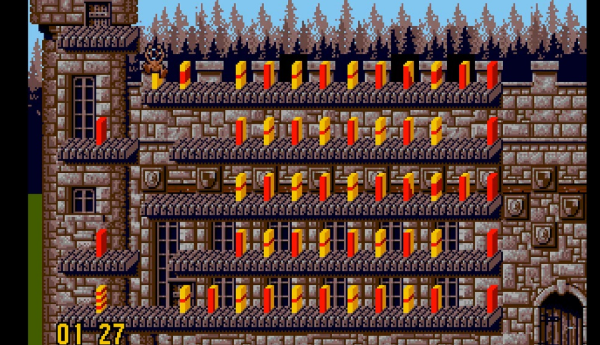
"¿And what are those little colored chips next to the yellow ones?" Now is when the thing is easy to explain, painfully dodgy to face. Those chips with red touches, or completely red in the case of stoppers, are chips with special qualities. There are a manageable and memorable number of them, and the one with three stripes is the last to be knocked down, and doing so after the others will open the exit door.
BUT, there always has to be one, you have to follow some rules: G. I. Ant cannot fall from great heights or he will die. You cannot fall on another tile carrying one in your arms, both would break. You cannot hinder the exit door with downed chips, because you would be trapped. And if a chip falls on it, it will also die, as well as falling off the screen.
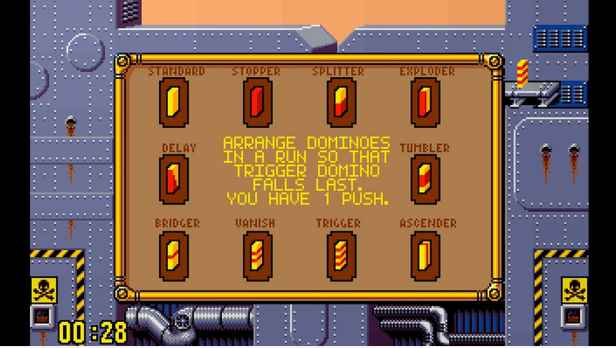
I add to complement, GI Ant cannot jump, and there will be situations where we must use the tiles to make our way both for the exit and to complete the demolition - a bridge or explosive tile, especially -, as well as taking other tiles and moving like a it blinks to position them once the sarao begins after the push.
It is the way in which these factors are combined, together with having to reach the exit in a stipulated time, which makes this a puzzle game as highly ingenious as it destroys patients. The funny thing is that unlike other games in the genre, Pushover does not add additional rules or obstacles with advancing levels.
The ten scenarios of the game are purely cosmetic, since we will play with the same rules from the beginning, having a hundred phases where the twisted designers will demonstrate that some trauma they had, or some hatred for humanity, making everything more convoluted each time.
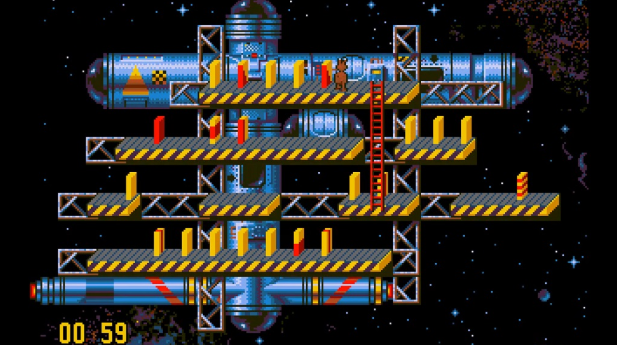
Add that if we arrive on time at the exit they will give us a cumulative token/wildcard that helps us to start a phase when we die, break a token, or finish a level that we have done well but out of time. The truth is that the first thirty levels are very fun and satisfying, and a good part of them are a contact with the tiles and the avatars that we must solve with them.
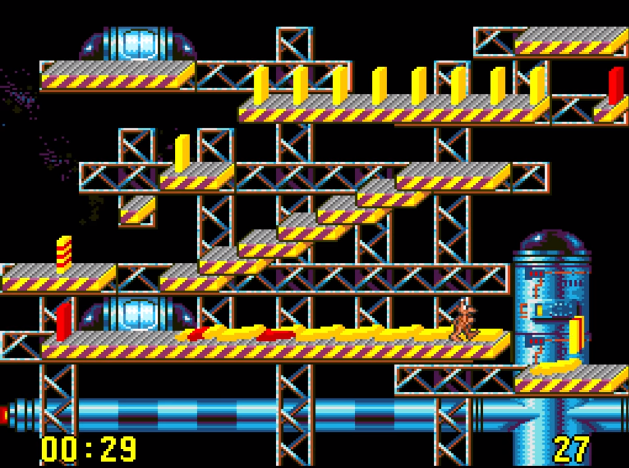
Then everything gets complicated, fury and tears will appear, levels 80 to 100 are black magic and I have already said that no new rules are added, but these can be twisted maliciously. I give you a hint, the push is not the only way to knock down a group of chips, and also, falling with a chip in your arms over another does not have to break it, but be favorable to us because ...
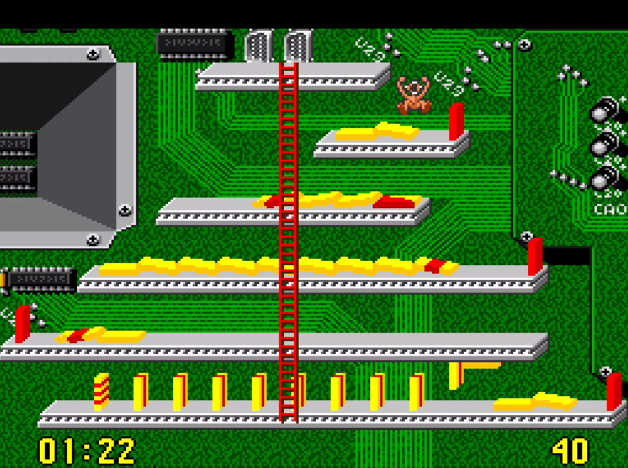
And continuing with the things that piss me off, it makes me sick that G. I. Ant does unnecessary animations like fuss when approaching any edge. If there is a lot of height, still, but when you have to go to full speed and you just want to go down to the level below, these fuss is superfluous. The protagonist is extremely nice and full of charisma, and those animations and funny gestures serve to reinforce, but the game sometimes asks for a bit of reaction speed and when you have seen for the hundred millionth time the happy ant complaining about the height, although not the beech, contributes to increase the existing psychosis.
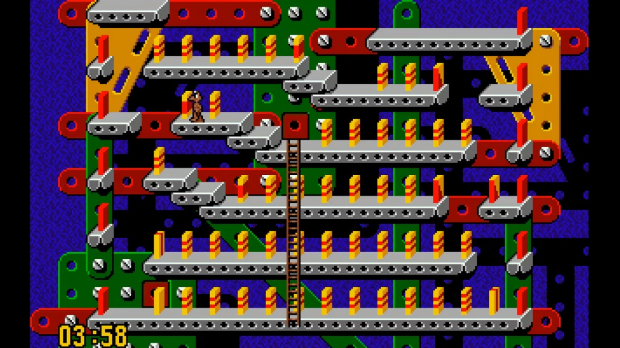
But I have to say that madness becomes satisfaction when you manage to solve a bastard phase, and in many cases, there are several ways to do it by playing with chips and phase design. Phase 100 is a huge trolley, where all the tiles are painted yellow, so we don't know what the special tiles are or what effect they have. That is why it is a trolley, it is still a trial-error and to point out that each token does testing a lot of pushes, more than a pure intelligence challenge like the other 99.
And my final impression is that even though it is an ingenious and stimulating game, I also think that condensing the essence of it, making it come to the same without so many levels, there could be something much more rounded. I think that it is not necessary to have so many stages of introduction or adaptation, nor to create so many twisted levels, but to reduce them into some less perfectly demonic and adapted to what you have done before.
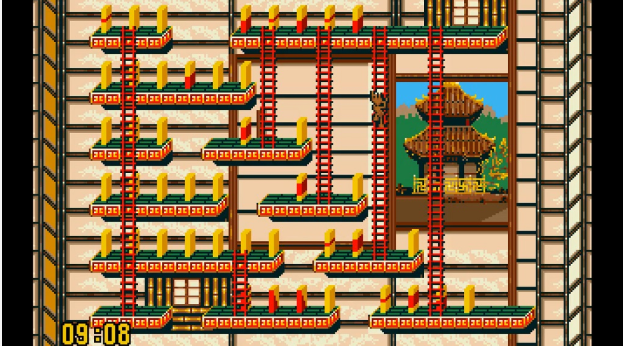
Here it is not necessary to kill me to show you the versions, they are very similar audiovisual, except for the change of plot and intros. I am left with the music of Super Nintendo, and the graphics of Amiga, which is the version that I have used to make the entrance showy. Technically it is a simple game and there is not much to tell.
So I hope that what I have counted has given you a little concern. It may be very worthwhile to approach the DOS version adapted to the present time, and that is why I have applied more current thought to a retro article than I would touch on in the section, because I think Pushover is still as current and bastardized as in that Olympic year that saw him born.
